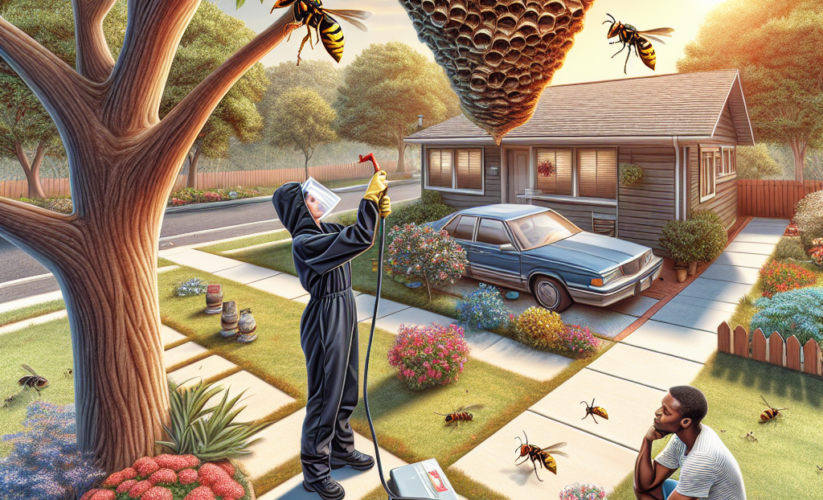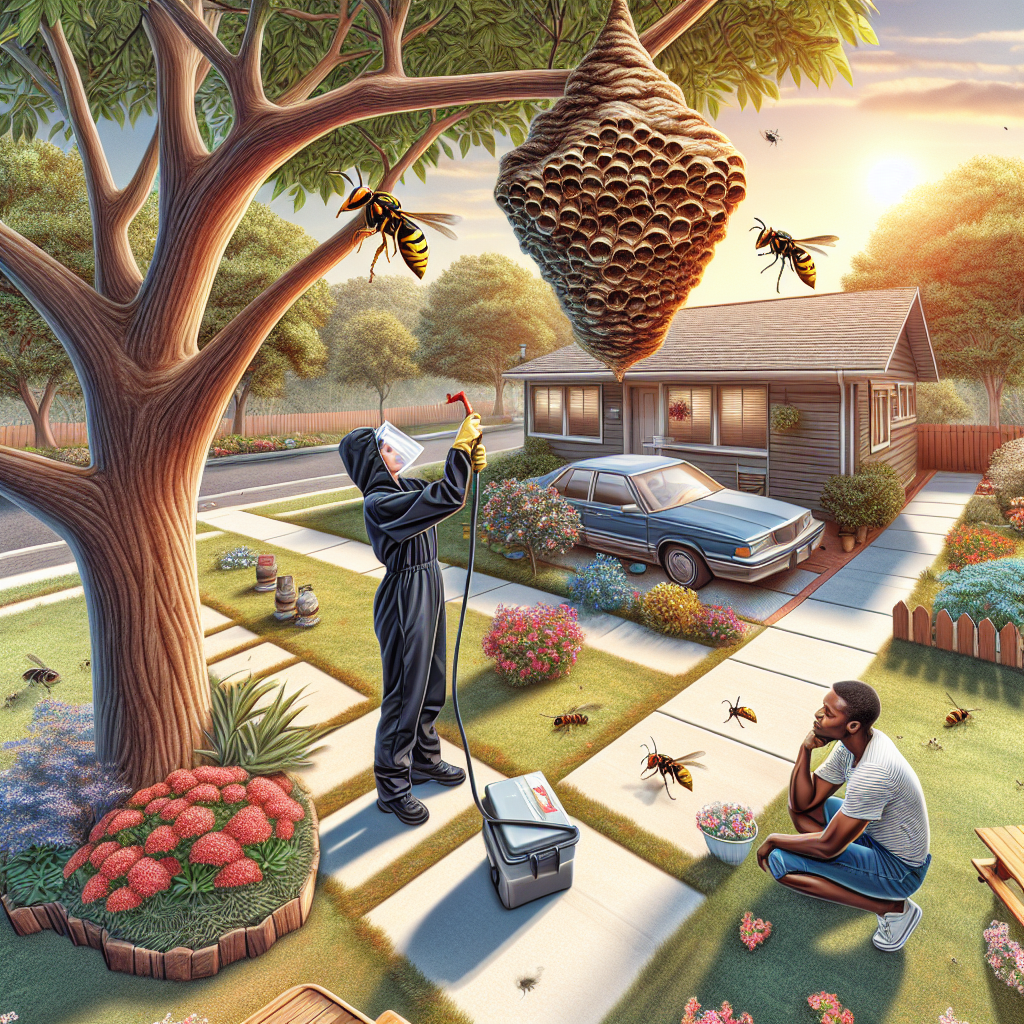
“10 Proven Tips for Safely Removing Hornissennest”
Understanding Hornissennest: The Fascinating World of Hornets
Hornissennest, or hornet nests, are intriguing structures created by hornets, a type of social wasp. These nests capture the imagination due to their unique architecture and the complex social behavior of the hornets that inhabit them. In this article, we will delve into the biology, structure, behavior, and ecology surrounding hornissennest, providing you with all the information you need to understand these remarkable creations.
What is a Hornissennest?
A hornissennest is a large, often football-shaped structure made from chewed wood fibers mixed with saliva, which hornets use to build their nests. Typically found in trees, shrubs, or on buildings, these nests can house hundreds of hornets. The **ecological role** of a hornissennest is significant, as hornets contribute to pest control by consuming other insects. Understanding the **construction of hornissennest** can provide insights into the behavior and collaboration of hornet colonies.
The Structure of Hornissennest
The structure of a hornissennest is an architectural marvel. Hornets create multiple layers of cells within the nest to raise their young. The outer layer is often smooth, while the inner chambers are distinct for rearing larvae. The nest’s construction materials—chewed wood and bark—provide insulation and protect against the elements. These nests can expand considerably as the colony grows, often reaching sizes of 24 inches or more in diameter. The **design of a hornissennest** demonstrates the sophisticated building techniques employed by insects, echoing nature’s engineering brilliance.

Social Behavior Inside the Nest
Inside a hornissennest, a fascinating social structure governs the hornet colony. Each nest typically contains one queen, responsible for reproduction, while the majority of the inhabitants are worker hornets. These workers take on various roles including foraging, nest maintenance, and protecting the colony. Their social interactions facilitate a high degree of organization, ensuring that the nest operates smoothly. Understanding the **social structure of hornets** can help appreciate the complexity of these seemingly simple beings.
Ecological Importance of Hornissennest
The ecological significance of hornissennest cannot be overstated. As **predators**, hornets play a crucial role in controlling pest populations by preying on insects such as caterpillars and flies. This natural form of pest control benefits agricultural crops and reduces the need for chemical pesticides. Furthermore, hornets serve as a food source for other wildlife, underlining their role in the larger ecosystem. Recognizing the **benefits of hornets** helps in fostering a positive perception of these misunderstood creatures.
Hornets and Biodiversity
Hornets contribute to biodiversity in several ways. By managing pest populations, they help maintain ecological balance, allowing various species to thrive. Additionally, hornett nests become habitats for other organisms, including certain species of fungi and mites. This interdependence illustrates the interconnectedness of life in various ecosystems, emphasizing the need to respect and protect such species. When considering **hornissennest**, it’s crucial to understand that these nests are not just homes for hornets but integral parts of their habitat.

Conservation and Protection
Conserving hornets and their nests is vital, yet often overlooked. Many people view hornets as pests; however, education on their ecological benefits can change perceptions. Protecting habitats where hornissennest are found not only ensures the survival of these insects, but it also supports the biodiversity that relies on them. In urban settings, creating **hornet-friendly environments** with ample food sources and nesting sites can help sustain local hornet populations.
Common Misconceptions About Hornissennest
Despite their ecological importance, hornissennest are often misunderstood. Many individuals believe that all hornets are aggressive; however, hornets tend to avoid human interaction unless provoked. Understanding the **behavioral traits** of hornets can dispel myths and educate the public on how to coexist peacefully. Moreover, not all hornets build conspicuous nests; some prefer to nest underground or in protected locations, highlighting the variety within these species.
How to Safely Deal with Hornissennest
If you discover a hornissennest on your property, it’s essential to approach the situation with caution. The safest option is to consult a pest control professional who can relocate the nest without causing harm to the creatures involved. If removal is necessary, it’s best to act during dusk or dawn when hornets are less active. **Protecting yourself while managing hornets** is crucial for ensuring both your safety and the welfare of these beneficial insects.
Benefits of Learning About Hornissennest
Educating yourself and others about hornissennest and their inhabitants fosters appreciation and conservation. Understanding their ecological role encourages mindful interactions with these insects. Schools, nature centers, and local communities can benefit from initiatives highlighting the importance of hornets and promoting safe coexistence. By advocating for **environmental education**, we can foster a community that respects and values this unique element of our ecosystem.
Key Takeaways
- A hornissennest is a complex structure built by hornets, serving ecological roles like pest control.
- Understanding the social behavior of hornets reveals their sophisticated community structures.
- Hornets contribute to biodiversity and ecological balance, highlighting the need for conservation.
- Debunking misconceptions about hornets can promote better coexistence with these insects.
- Education on hornets and hornissennest is essential for fostering respect for these vital organisms.
FAQ
1. Are hornets aggressive creatures?
Hornets are not inherently aggressive. They usually only attack when they feel threatened or their nest is disturbed. Understanding their behavior can help individuals coexist safely with hornets.
2. How do hornets build their nests?
Hornets construct nests using chewed wood fibers mixed with saliva, which they then shape into a smooth structure. The construction process involves the collaboration of many workers, showcasing their social behavior.
3. Can hornets be beneficial to gardens?
Yes, hornets play a crucial role in pest control by preying on various insects that may damage plants. Thus, their presence can be beneficial for maintaining a healthy garden ecosystem.
4. What should you do if you find a hornissennest on your property?
If you find a hornissennest, it’s best to avoid disturbing it and contact a pest control professional for safe relocation if necessary.
5. How can I educate others about the importance of hornets?
Hosting informational sessions, creating educational materials, and engaging with local schools and communities can help spread awareness about the ecological roles of hornets and hornissennest.